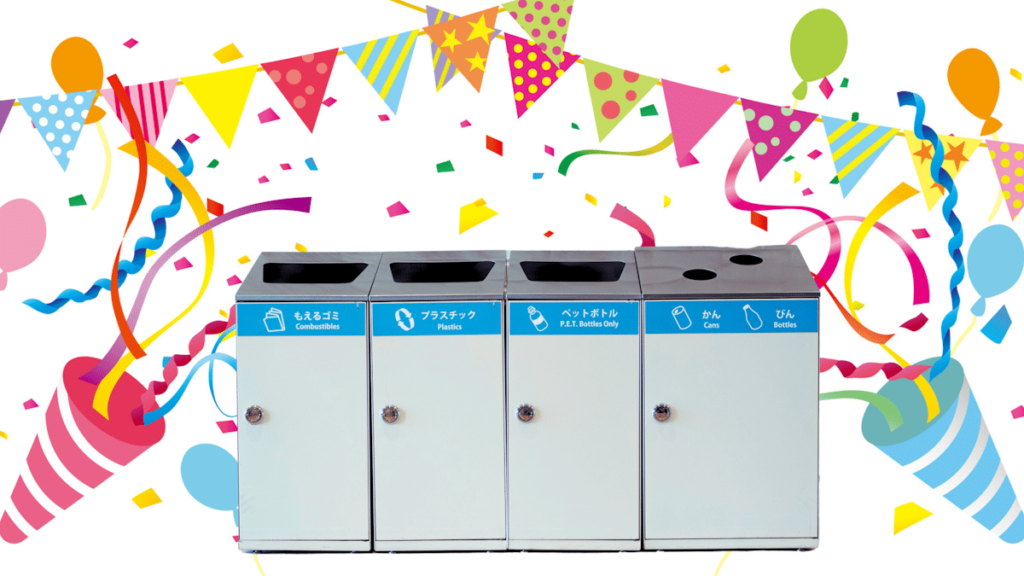[ad_1]
This month was not the best for tourists in Japan.
Scammers trapped tourists to book hotels that didn’t exist. Japan’s fastest Shinkansen bullet train service announced plans to suspend sales of cheaper non-reserved seats during major holidays starting this coming New Year. Tourists overpaid for meals at restaurants that charged “hidden fees” in their pricing.
But now for some good news–––trash boxes are making a comeback in Japan’s major tourist spots.
The lack of trash boxes in Japanese cities is arguably the biggest headache tourists experience.
A possible cure is on the horizon–––SmaGO, a trash box equipped with advanced technology to compress its contents, enabling storage of garbage five times the amount of a regular bin.
Kyoto experimenting
Kyoto’s infamously picturesque bamboo grove in Arashiyama (嵐山) became the latest tourist spot to install SmaGO on September 13th when trash pickup and recycling company Kinoshita-Kansē (木下カンセー) donated the trash box to the city.
SmaGO, short for “Smart on the GO,” is an invention by the Japanese company Forcetec.
Advertisements
In March this year, Kyoto began introducing SmaGO to the streets connecting major tourist attractions like the Kyoto Imperial Palace and Nishiki food market. The city now has a total of six SmaGO trash boxes.
“Striking a balance is difficult because the more trash boxes we install, the more garbage people throw away. SmaGO might just be a solution,” said Makino Junji (牧野順二), chairman of Arashiyama Hosyō Kai (嵐山保勝会), a local tourism organization.
A conundrum
Kyoto used to have trash boxes until residents complained about overflowing bins and demanded their removal. That was the case for Arashiyama in 2017, when the officials answered citizens’ request to take away the shopping avenue’s four trash boxes.
Most people thought that removing trash boxes would encourage people to take trash home. However, the outcome was an increase in littering.
Some businesses installed their own trash boxes but would place them in the shop’s back to prevent terrorists from dropping hidden bombs in the bins. For the shops that placed trash boxes in storefronts, the problem of overflowing garbage became an issue–––ultimately resulting in the decision to remove trash boxes.
The trash box conundrum in Kyoto and other big cities finally has a potential solution with SmaGO.
What makes SmaGO smart
Garbage won’t spill onto the ground easily with SmaGO. It saves space too. To top it off, it’s cost-efficient for garbage collectors.
SmaGO uses sensors that detect how full the trash box is. When a SmaGO trash box becomes full, pressure of over 500 kilograms compresses the waste. This creates space to store five times the amount of trash compared to regular bins.
That means one SmaGO can replace five regular trash cans that take up street space.
SmaGO also uses solar power to run a communications system that allows monitors to track how full the trash box is in real-time. That makes collecting garbage more efficient.
How trash cans went missing
The disappearance of public trash cans in Japan began in 1995 when the cult Aum Shinrikyo carried out modern Japan’s deadliest terror attack on the Tokyo Metro. Twelve people died and over a thousand incurred severe injuries in the Subway Sarin Incident, or Chikatetsu Sarin Jiken (地下鉄サリン事件).
Today, only one out of the Tokyo Metropolitan Area’s eleven railway companies has trash cans in its train stations–––JR East.
Railway companies Tokyū and Keio wiped their infrastructure clean of trash cans in 2004 following the Madrid train bombings. That same year, the Ministry of Land, Infrastructure, Transport and Tourism, as well as the National Police Agency, requested the removal of bins from public property.
Seibu Railway and Tokyo Metro followed in 2021, citing security concerns over “suspicious objects” that staff would find in bins. In March this year, Tobu and Odakyū removed all their trash cans.
Whether SmaGO will be trash boxes’ return to train stations is worth looking out for. In the meantime, best to carry around a baggy still.
What to read next
A True Tourist Trap: This Hotel in Japan Doesn’t Exist
Sources
[1] 京都・嵐山のごみ散乱妨げ 圧縮機能つきのごみ箱を設置. 朝日新聞
[2] 京都市内における初の「SmaGO」の設置・運用が開始されました!. Forcetec
[3] 京都 嵐山に「スマートゴミ箱」設置 自動圧縮で収容量は5倍に. NHK
[4] 人気観光地・嵐山 “ごみ箱”がない問題 あふれるごみの問題から市がごみ箱を撤去 観光客や地元は困っているが再設置は難しい「スマートごみ箱」で解決に期待? . Yahoo!ニュースJAPAN
[5] ABOUT US. Forcetec
[6] SmaGO. Forcetec
[7] 消えるごみ箱…首都圏の駅で続々と、メトロは17日から全面撤去. 朝日新聞
[8] 駅のゴミ箱、どこ行った?ポイ捨ては減ったのか鉄道各社に聞いてみると…. Business Insider Japan
[9] 駅からゴミ箱消える、首都圏10事業者が撤去…家庭から持ち込み絶えず. 読売新聞オンライン
[ad_2]
Source link



